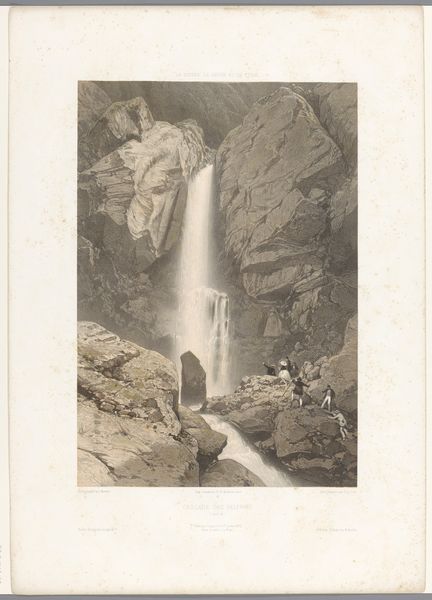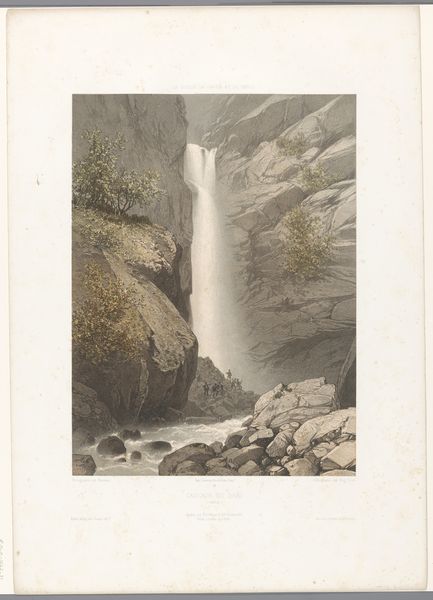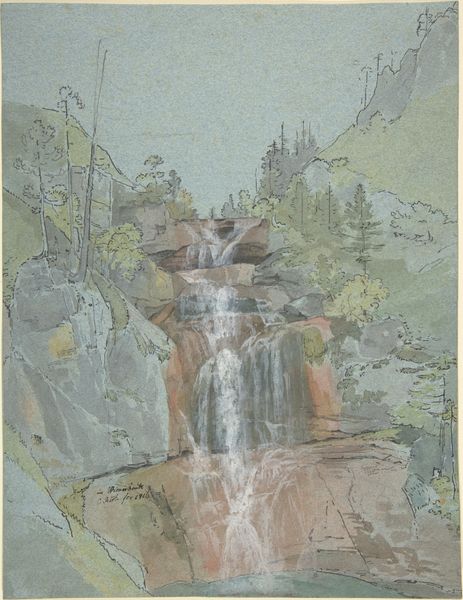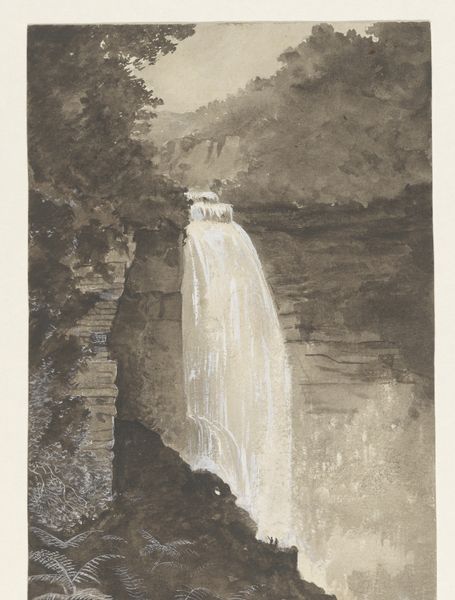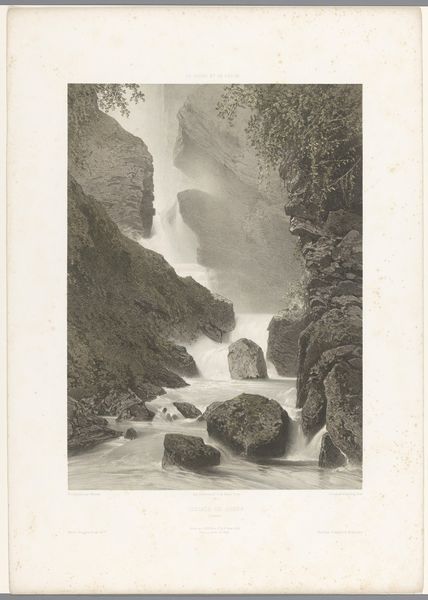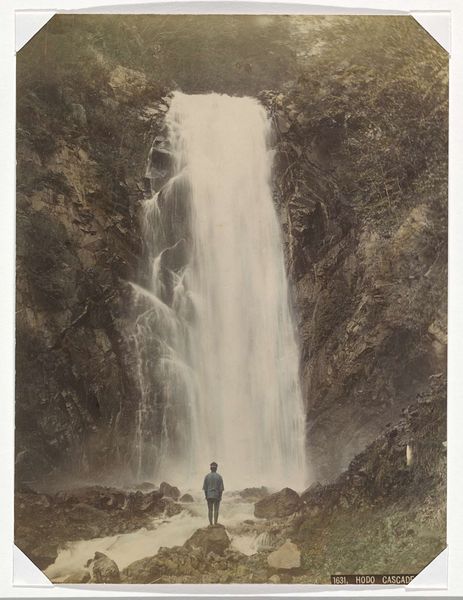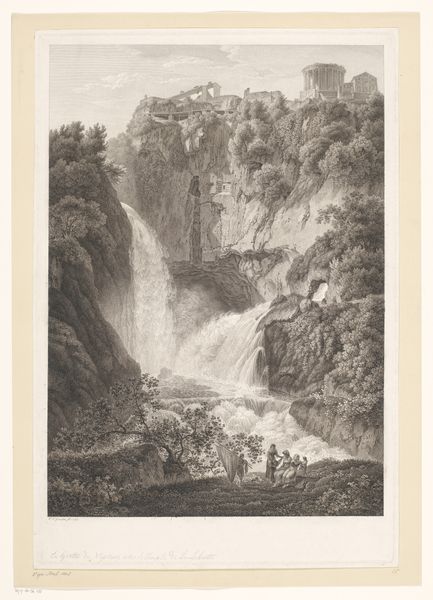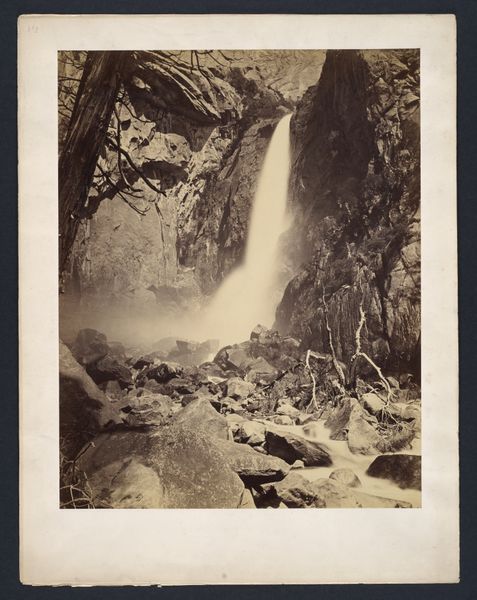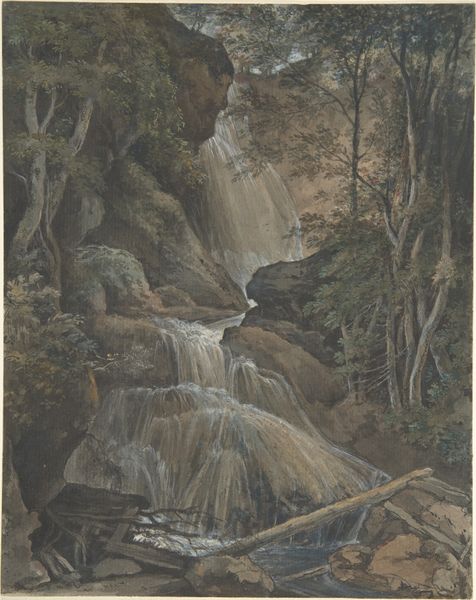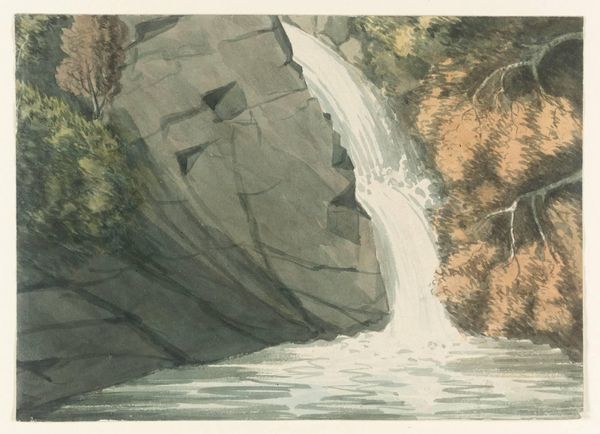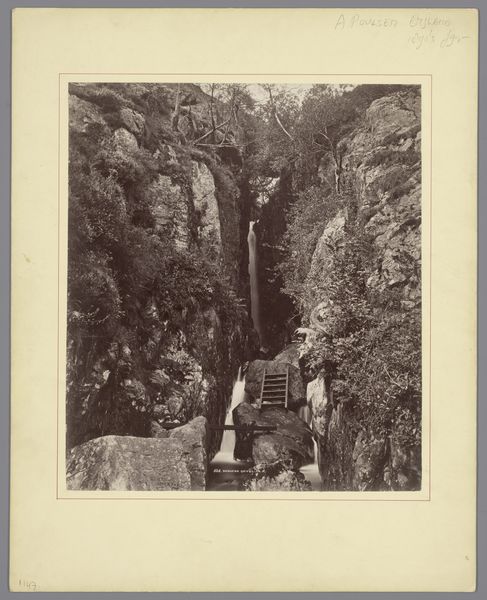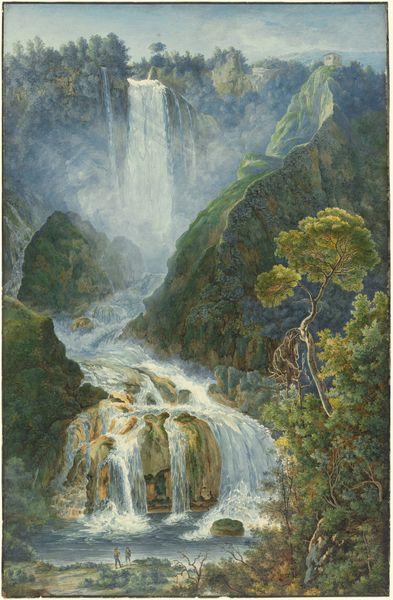
drawing, print, paper, watercolor
#
drawing
# print
#
impressionism
#
landscape
#
impressionist landscape
#
paper
#
watercolor
#
naturalistic tone
#
water
#
watercolor
#
realism
Dimensions: 227 × 156 mm
Copyright: Public Domain
Edward Dayes made this watercolor drawing of a Waterfall sometime around the late 18th century. At that time, the concept of the “picturesque” was highly fashionable in British artistic and intellectual circles. The picturesque celebrated the beauty of nature, but with a particular emphasis on ruggedness and irregularity. Think of it as being an alternative to the classical idea of beauty that was obsessed with symmetry. Dayes’s Waterfall is a quintessential example of the picturesque, and it is no accident that he would have chosen to render it in watercolor. The medium was considered perfect for capturing transient effects of light and atmosphere. Artists who embraced the picturesque sought to elevate landscape painting to the level of history painting. Unlike history paintings which might celebrate the social order, picturesque landscapes celebrated the wildness of nature. To fully understand this drawing, we might consult travel literature, art criticism, and the writings of philosophers like Edmund Burke, who wrote about the sublime.
Comments
No comments
Be the first to comment and join the conversation on the ultimate creative platform.

